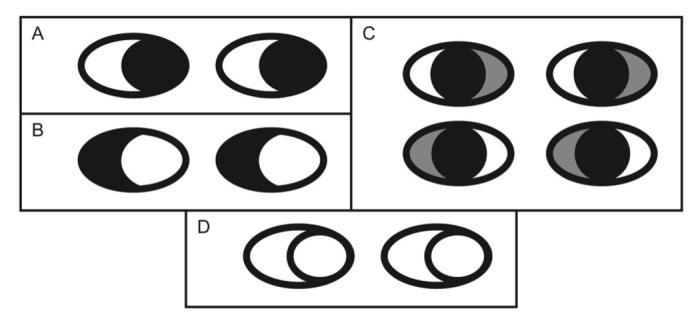Figure 1.

Illustration of the influence of luminance contrast and geometry on gaze perception. Panel A shows “normal” cartoon eyes with geometry and luminance preserved. Panel B is the contrast inverted version of Panel A, which has been shown to result in difficulty in gaze discrimination tasks. Panel C shows how making the left or right sclera of the eyes darker (which could happen in shadow or other suboptimal lighting conditions) can influence gaze perception. Panel D shows an example in which both sclera and pupil are white, but the geometry is preserved.
